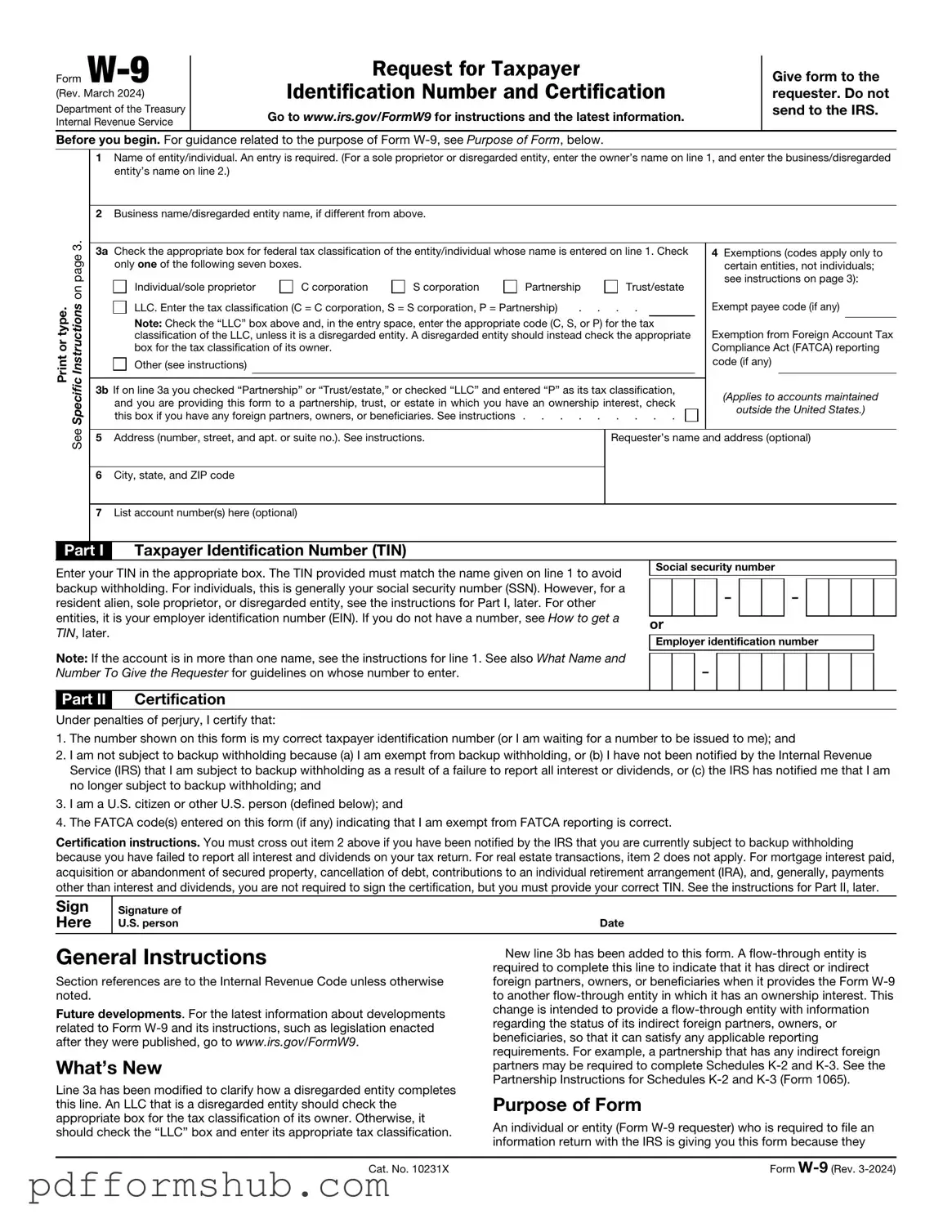Fill in Your IRS W-9 Form
The IRS W-9 form is a document used by individuals and businesses to provide their taxpayer identification information to others, typically for tax reporting purposes. It is essential for freelancers, contractors, and vendors who receive payments, ensuring that the correct tax information is reported to the IRS. Understanding how to fill out this form accurately can save you from potential tax issues down the line.
Ready to get started? Fill out the form by clicking the button below.
Customize Form
